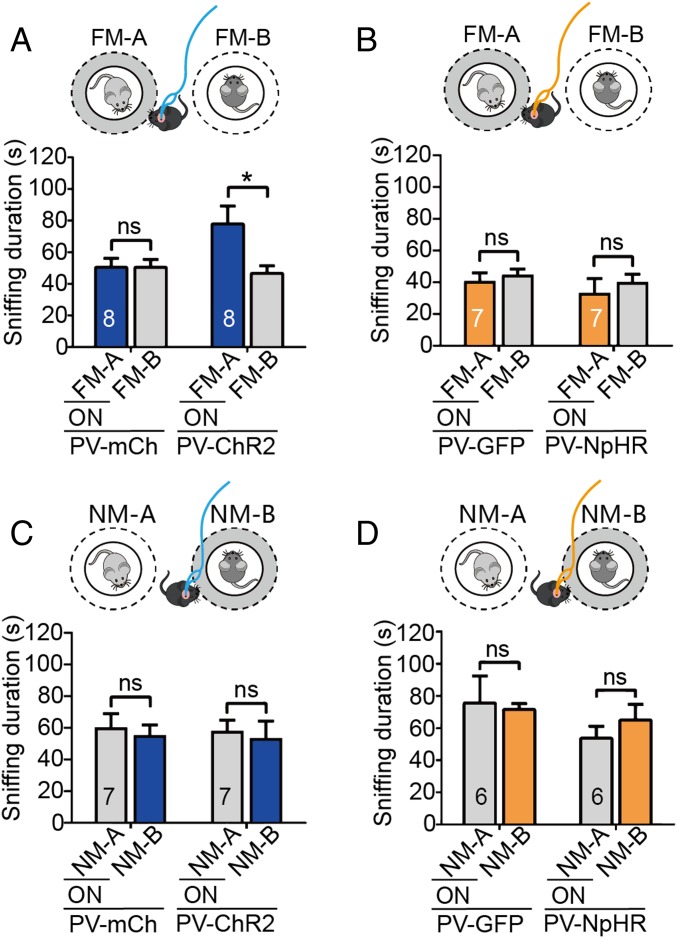Fig. 4.
Effects of optogenetic excitation or inhibition of vCA1-PVIs coupling with investigating one of a pair of familiar/novel mice on social discrimination. (A and B) When a pair of familiar mice were used as the targets, the time that PV-ChR2 mice (n = 8) spent in investigating the familiar mouse (coupling with 473-nm laser stimulation) was enhanced, compared with control mice (n = 8) (A) while the time that PV-NpHR mice (n = 7) spent in investigating the familiar mouse (coupling with 589-nm laser stimulation) was similar to that in control mice (n = 7) (B). (C and D) When a pair of novel mice were used as the targets, no significant change of social preference or avoidance was observed in either neuronal excitation (C, mCh, n = 7, ChR2: n = 7) or inhibition (D, GFP, n = 6, NpHR, n = 6). FM, familiar mouse; NM, novel mouse; ON, turn on the optogenetic laser. All data are expressed as mean ± SEM *P < 0.05; ns, not significant.

